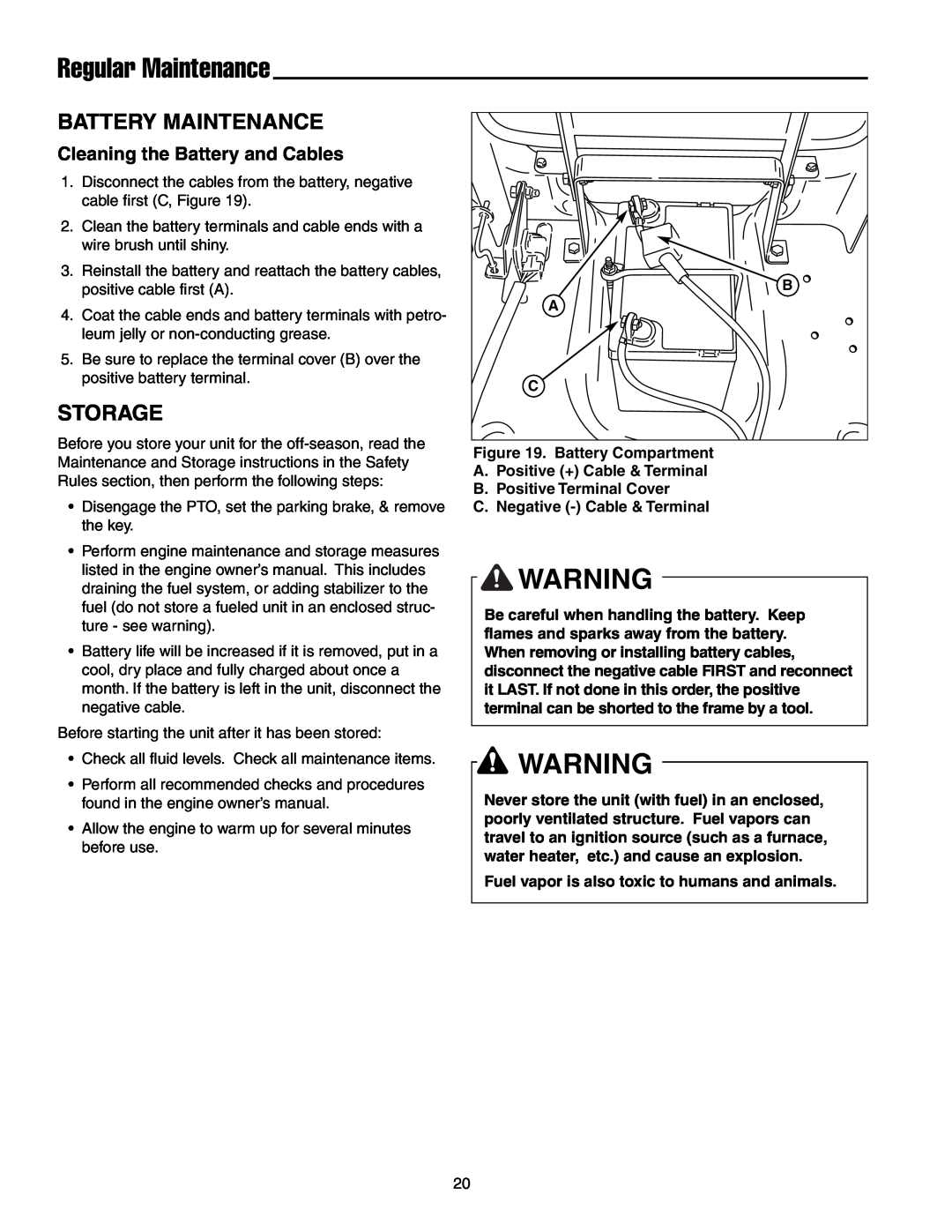
Regular Maintenance
BATTERY MAINTENANCE
Cleaning the Battery and Cables
1.Disconnect the cables from the battery, negative cable first (C, Figure 19).
2.Clean the battery terminals and cable ends with a wire brush until shiny.
3.Reinstall the battery and reattach the battery cables, positive cable first (A).
4.Coat the cable ends and battery terminals with petro- leum jelly or
5.Be sure to replace the terminal cover (B) over the positive battery terminal.
STORAGE
Before you store your unit for the
•Disengage the PTO, set the parking brake, & remove the key.
•Perform engine maintenance and storage measures listed in the engine owner’s manual. This includes draining the fuel system, or adding stabilizer to the fuel (do not store a fueled unit in an enclosed struc- ture - see warning).
•Battery life will be increased if it is removed, put in a cool, dry place and fully charged about once a month. If the battery is left in the unit, disconnect the negative cable.
Before starting the unit after it has been stored:
•Check all fluid levels. Check all maintenance items.
•Perform all recommended checks and procedures found in the engine owner’s manual.
•Allow the engine to warm up for several minutes before use.
B |
A |
C |
Figure 19. Battery Compartment
A.Positive (+) Cable & Terminal
B.Positive Terminal Cover
C.Negative
![]()
![]() WARNING
WARNING
Be careful when handling the battery. Keep flames and sparks away from the battery. When removing or installing battery cables, disconnect the negative cable FIRST and reconnect it LAST. If not done in this order, the positive terminal can be shorted to the frame by a tool.
![]() WARNING
WARNING
Never store the unit (with fuel) in an enclosed, poorly ventilated structure. Fuel vapors can travel to an ignition source (such as a furnace, water heater, etc.) and cause an explosion.
Fuel vapor is also toxic to humans and animals.
20
